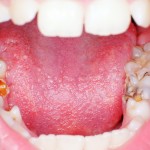
Assessing an individual patient’s risk of caries is considered to be an important element of contemporary treatment planning, for example the 2004 NICE (National Institute for Health and Clinical Excellence) recall guidance recommended risk-based recall intervals.
The aim of this review was to assess the evidence supporting four caries risk assessment (CRA) systems:-
- Cariogram,
- Caries Management by Risk Assessment (CAMBRA),
- American Dental Association (ADA), and
- American Academy of Pediatric Dentistry (AAPD)
The Cochrane Oral Health Group’s Specialized Register, Cochrane Central Register of Controlled Trials, and Medline databases were searched together with reference lists of identified articles. Studies were included if they used caries incidence/increment and they were conducted in humans and involved natural carious lesions. Only publications in peer-reviewed journals were considered.
The primary clinical outcomes considered were caries incidence/increments, and the validity of the system/guideline was assessed from the data reported on sensitivity, specificity, negative and positive predictive values (NPV/PPV), and area under the receiver operating curve (AUROC). One author extracted data which was independently verified by a second author. Study quality was assessed using the criteria reported in the ADA Clinical Recommendations Handbook.
- From the 137 reports of studies were selected for full review, 34 presented general prediction models but did not evaluate any of the four CRA systems under review.
- 17 studies reported data for the Cariogram, only six of these were prospective studies, with 5 focussing on validation for caries prediction).
- 7 studies evaluated the CAMBRA guidelines, 6 these studies were narrative descriptions one study was a retrospective analysis of electronic data and paper charts to validate the CAMBRA form for children aged 6 and over.
- All the other studies were summary reviews/comments on risk assessment (n = 73). No other published longitudinal studies were identified that would report data on the caries prediction capability of the guidelines proposed by the ADA or the AAPD.
The authors concluded
The evidence on the validity for existing systems for CRA is limited. It is unknown if the identification of high-risk individuals can lead to more effective long-term patient management that prevents caries initiation and arrests or reverses the progression of lesions. There is an urgent need to develop valid and reliable methods for caries risk assessment that are based on best evidence for prediction and disease management rather than opinions of experts.
Comment
Recently we ( 31st August ) we published a blog about caries risk factors in the first year of life, noting that a 2004 review had highlighted over 100 risk factors for caries. Interestingly the 2005 SIGN Guideline for preschool children recommended caries risk assessment for pre-school children based on the Dundee Caries Risk Assessment model (DCRAM) which was not included in this review and was based on a longitudinal study. Recently a new paper by MacRitchie at al has been published highlighting a development of the DCRAM.
Links
Tellez M, Gomez J, Pretty I, Ellwood R, Ismail A. Evidence on existing caries risk assessment systems: are they predictive of future caries? Community Dent Oral Epidemiol. 2012 Sep 15. doi: 10.1111/cdoe.12003. [Epub ahead of print] PubMed PMID: 22978796.
NICE Dental recall: Recall interval between routine dental examinations.
MacRitchie HM, Longbottom C, Robertson M, Nugent Z, Chan K, Radford JR, Pitts NB. Development of the Dundee Caries Risk Assessment Model (DCRAM)–risk model development using a novel application of CHAID analysis. Community Dent OralEpidemiol. 2012 Feb;40(1):37-45. doi: 10.1111/j.1600-0528.2011.00630.x. Epub 2011 Aug 12. PubMed PMID: 21838824.

[…] […]
[…] Dental Elf – 8th Oct 2012 – Limited evidence for caries risk assessment systems […]